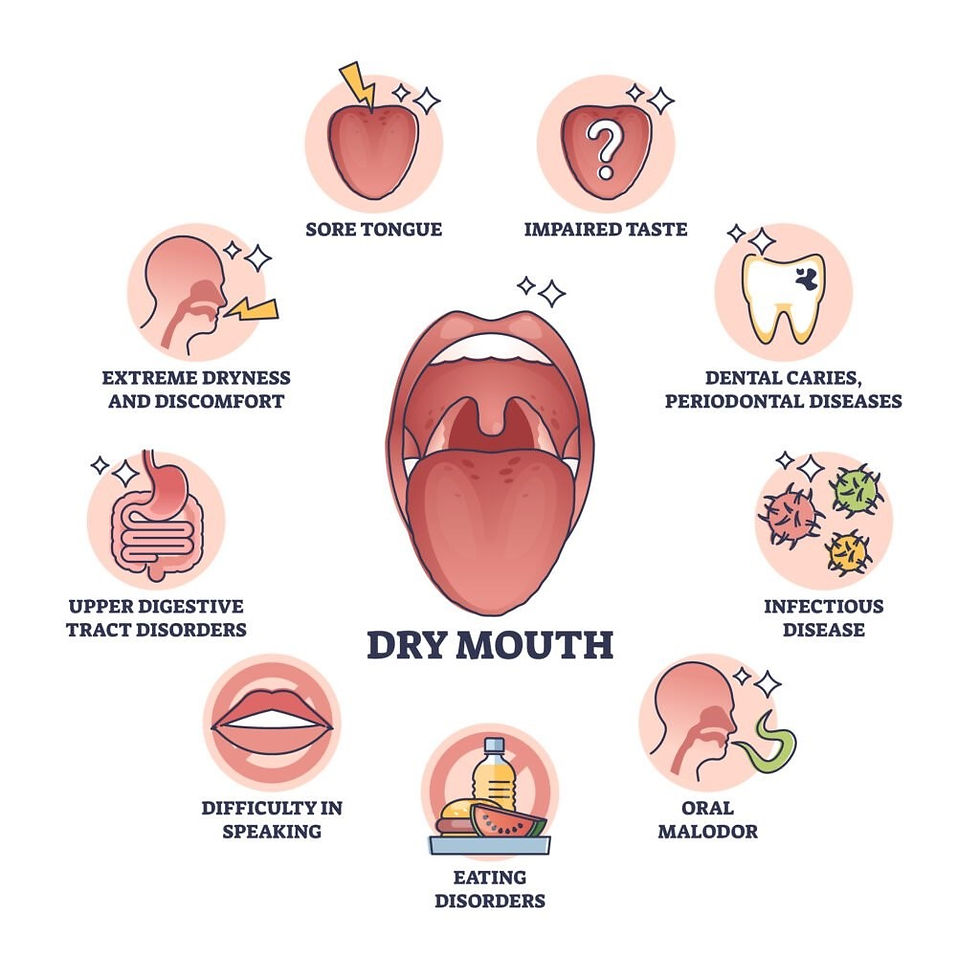Should you shake your head if your foot fell asleep?
- kimberlyannecv
- Jun 10
- 3 min read

Last month, a viral post has gone around claiming that if "Your foot falls asleep you're supposed to shake your head for your brain to signal your foot." Before we can answer, we first need to understand what the claim is saying.
Let's break it down!
The uncomfortable sensation of your foot or arm "falling asleep" is called paresthesia. This sensation is often described as tingling, prickling, numbing. This combination has been surmised to the phrase "pins and needles," referring to the small but frequent feeling of discomfort.
The claim "shake your head for your brain to signal your foot," follows the presumption that our nerves are powered my physical movement rather than electrical connections in the brain. This is where information may be misunderstood!
How does our brain detect pain?
The human body is covered with pain receptors, both inside and outside your body. That's why besides external pain, like stubbing your toe, you can also detect internal pain like when you have a stomach ache.
When these pain receptors detect something wrong they release chemicals called neurotransmitters. Think of these as little messages that only the brain can understand. In these messages they tell the brain, how bad the pain is, and where it's coming from. The neurotransmitters then travel through your vast network of nerves, merge together into the spinal cord, and up to your brain.
Here, your brain processes the information and sends a command out. Whether that be pulling your hand away from a burning pot, or dodging a moving vehicle, the brain has got your back!
In this particular case, your pain receptors are numbed due to the pressure they sense on your nerves. That's why you may not notice that you've pinched them in the first place. Since the area is pinched, the neurotransmitters can't travel as fast to your brain, giving you a numbing feeling as a result. But once it does, and you finally lift your foot, you feel that prickly sensation. It's your neurotransmitters finally reaching your brain! Eventually the feeling evens out and your foot feels normal again.
Our brain doesn't need a physical nudge to get information. The nerves in our body does that all on its own.
So should I continue to shake my head when I get pins and needles in my foot or should I not?
It's up to you!
But you don't have to. As mentioned in the previous section, paresthesia is caused by the pinched area and will only recover if you relieve the pressure on it. Any unaffected area has no step in the recovery of your foot, all you're doing is waiting for your nerves to relax. This is the same if you decide to shake the affected area too. For example, you can shake your foot but the rate of recovery is the same if you simply lifted your foot. The pinched area is the only area that needs to move.
In general, the usual ailment for temporary paresthesia is to move around. After all, the effect only occurs after you've been sitting in one position for a fairly long period of time. But instead of shaking your head or any other unaffected part of your body, try stretching the effected area, and maybe even massage it with your hands to soothe the pain. Once the feeling dissipates you'll be good as new!
In conclusion, humans like to experiment. Some of these tricks online have good intentions, and some just want to poke fun at people's gullibility. Whatever the case is, it's pretty harmless to do while your body does the work.
And if you've been sitting down while reading this, remember to stand up and stretch! Your body will thank you.
Note: This article only addresses the common temporary or transient paresthesia. If you experience paresthesia often it may be a result of underlying causes. Please talk to your doctor or physician for a proper diagnosis.
Image Credit:
martin-dm on iStock
Sources:
Paresthesia
The Science of Pain
Psychophysics of Pain
Assessed and Endorsed by the MedReport Medical Review Board






